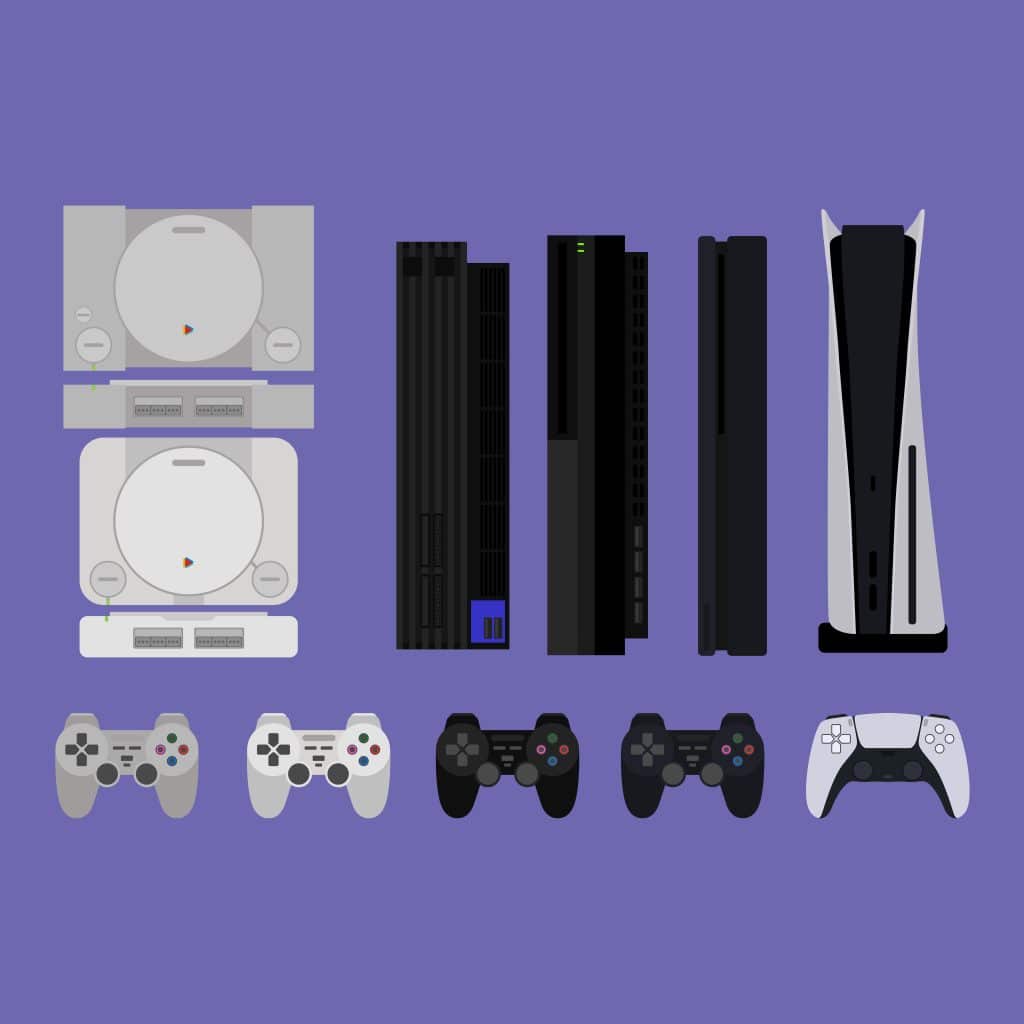Gaming Consoles Compared: Graphics and Performance in the US

Gaming Consoles have transformed the entertainment landscape, delivering breathtaking graphics, lightning-fast performance, and immersive gameplay.
Whether you’re a competitive gamer or a casual player, choosing the right system can redefine your experience.
In this guide, we dive into the visual and performance capabilities of today’s most powerful gaming systems, and why your next purchase should be an informed one.
Understanding Graphics Performance in Gaming Consoles: Core Elements Behind Visual Power
When evaluating modern Gaming Consoles, graphics performance stands as a major deciding factor for gamers. It’s not just about how sharp a game looks, but how fluid, dynamic, and immersive the overall experience feels.
From realistic lighting to seamless rendering, today’s consoles leverage advanced hardware and software to push visual boundaries further than ever before.
What Graphics Performance Actually Means
Graphics performance is the result of how well a console can render, process, and display visual data in real-time. This involves multiple components working together, with the GPU and CPU at the center of it all.
According to recent expert reviews, including benchmark tests from TechRadar and hands-on performance insights from Wirecutter, performance is defined by far more than screen resolution alone.
GPU (Graphics Processing Unit): The Visual Engine
The GPU is responsible for drawing everything you see on screen—from environments to character models and textures.
In the PS5 and Xbox Series X, custom-built RDNA 2 GPUs from AMD enable 4K gaming at up to 120 FPS, while supporting real-time ray tracing for lifelike shadows and reflections.
These GPUs handle billions of calculations per second, allowing games to run smoothly even with complex environments.
CPU (Central Processing Unit): The Brain Behind the Game
While the GPU handles rendering, the CPU ensures that everything behaves logically. AI movement, physics, world simulation, and in-game decisions are all managed by the CPU.
Both the PS5 and Xbox Series X utilize 8-core AMD Zen 2 processors, enabling fast processing of in-game tasks with minimal bottlenecks, which is crucial for action-heavy and open-world games.
Key Metrics That Define Visual Quality in Gaming Consoles
- Resolution: Current high-end consoles consistently target 4K resolution, with some games offering dynamic scaling or performance modes that shift between 1440p and 4K to maintain frame rates.
- Frame Rate: Most AAA titles aim for 60 FPS, but select optimized games on PS5 and Xbox Series X can hit 120 FPS. Higher frame rates lead to smoother animations and more responsive controls.
- Graphical Fidelity: Fidelity refers to the detail and realism in visual assets. This includes high-resolution textures, global illumination, dynamic shadows, and particle effects that bring scenes to life.
Software Optimization: A Hidden Game-Changer
It’s not just hardware that impacts graphics. Software plays a crucial role.
Game developers optimize titles to run better on specific consoles, leveraging techniques like checkerboard rendering, DLSS-style upscaling, and adaptive sync to maximize performance without sacrificing visual quality.
This level of optimization helps consoles deliver near-PC quality experiences without requiring hardware upgrades.
The Role of Storage and Architecture
Fast storage, particularly in the form of NVMe SSDs, contributes significantly to visual fluidity. Rapid data access enables seamless world loading and texture streaming, preventing pop-ins and maintaining immersion during high-speed gameplay.
This is especially evident in open-world games and titles that utilize real-time asset loading.
Why This Matters for Gamers
Understanding these performance elements allows players to make informed decisions based on what they value most—whether it’s ultra-smooth gameplay, photo-realistic visuals, or a balance of both.
While raw specs are important, the real-world performance also depends on how well developers harness the full potential of each console’s graphics pipeline.
In short, Gaming Consoles have entered a new era where visual performance rivals high-end PCs, but with the added benefit of optimization, simplicity, and exclusive features tailored for specific hardware.
PlayStation 5 vs Xbox Series X: Comparing the Titans of Gaming Consoles

Among all current Gaming Consoles, none draw as much attention or comparison as the PlayStation 5 and Xbox Series X.
These two flagship systems represent the pinnacle of console gaming performance, each delivering exceptional visuals, lightning-fast load times, and immersive gameplay through unique ecosystems and hardware configurations.
Choosing between these high-end Gaming Consoles often comes down to technical priorities, preferred game libraries, and how each brand enhances the overall experience.
While both offer impressive raw power, subtle differences in features and optimization can significantly influence your decision.
Hardware Comparison: A Battle of Custom Engineering
Both the PlayStation 5 and Xbox Series X feature custom-designed hardware based on AMD’s Zen 2 CPU and RDNA 2 GPU architectures.
These setups allow both Gaming Consoles to support ray tracing, fast SSD performance, and gaming in native 4K at up to 120 FPS in select titles.
However, benchmarks analyzed by experts highlight small but important differences.
The Xbox Series X offers a slightly higher GPU compute performance (12 teraflops vs. PS5’s 10.28 teraflops), potentially giving it a marginal edge in raw graphical capability.
On the other hand, the PS5 features an ultra-fast SSD (5.5 GB/s raw bandwidth) that enables extremely short load times and more dynamic in-game streaming.
Graphics Performance in Real Scenarios
- PlayStation 5: Prioritizes immersive gameplay with detailed environments and responsive controls. Its integration of haptic feedback and 3D audio further enhances realism.
- Xbox Series X: Excels in consistent resolution scaling and performance modes, offering smoother frame rates and clearer image quality in demanding scenes.
In practice, both Gaming Consoles perform similarly in most cross-platform titles, but first-party games tend to leverage each console’s strengths to the fullest.
PlayStation exclusives focus on cinematic visuals and emotional storytelling, while Xbox titles lean into large-scale worlds and system-level features like Quick Resume.
Features That Elevate the Experience
Both systems introduce innovations that go beyond visual power. The PS5 DualSense controller adds a new layer of physical immersion through adaptive triggers and nuanced vibrations.
Meanwhile, Xbox Series X continues to impress with ecosystem features like Smart Delivery and backward compatibility with four generations of Xbox games.
- Quick Resume (Xbox Series X): Instantly switch between multiple games without losing progress.
- Adaptive Triggers and Haptics (PS5): Simulate tension, texture, and feedback directly through the controller.
- Game Pass (Xbox): Offers a massive library of games for a monthly fee, including new releases on day one.
Game Library and Ecosystem: The Deciding Factor
One of the most significant differences between these Gaming Consoles lies in their game ecosystems.
The PlayStation 5 continues to dominate with story-rich exclusives like Demon’s Souls, Ratchet & Clank: Rift Apart, and Spider-Man: Miles Morales. These games are specifically designed to showcase the PS5’s graphics and performance capabilities.
The Xbox Series X, while less focused on exclusivity, shines through its subscription service.
With Xbox Game Pass Ultimate, players gain access to a rotating catalog of over 100 games, cloud gaming, and online multiplayer, all of which increase the value of the console.
Verdict: Which Gaming Console is Right for You?
While both the PlayStation 5 and Xbox Series X are top-tier Gaming Consoles, your choice should reflect your priorities:
- Choose PlayStation 5 if you value cinematic storytelling, cutting-edge controller features, and highly polished single-player exclusives.
- Choose Xbox Series X if you prefer broad access to a large game library, powerful performance modes, and long-term value through Game Pass.
Ultimately, both Gaming Consoles deliver premium experiences, and the final decision often comes down to personal gaming style, exclusive content, and brand loyalty.
Nintendo Switch: Graphics and Performance Overview

Within the landscape of modern Gaming Consoles, the Nintendo Switch stands out by offering a hybrid gaming experience that combines versatility, creativity, and accessibility.
Rather than competing directly with the raw power of the PlayStation 5 or Xbox Series X, the Switch takes a different path focused on portability and unique gameplay design.
While it may not deliver 4K resolution or ultra-high frame rates, the Nintendo Switch has proven that performance is not solely defined by specs.
Its success is built on how it adapts to players’ lifestyles and brings entertainment beyond the traditional living room setup.
Hardware Designed for Flexibility and Function
The Nintendo Switch uses a custom NVIDIA Tegra processor, built to efficiently support both handheld and docked modes.
Unlike other Gaming Consoles that are stationary and high-powered, the Switch’s architecture is optimized for battery life, lightweight portability, and stable gameplay across various configurations.
This chip combines the CPU and GPU into a compact system that balances energy efficiency with reliable rendering performance. It allows users to move effortlessly between solo handheld play, shared tabletop sessions, and docked gameplay on a television.
Visual Output Across Modes
- Handheld Mode runs at 720p, offering fluid visuals optimized for the 6.2-inch screen and long play sessions.
- Docked Mode outputs up to 1080p on a TV, delivering crisp visuals for couch gaming despite not supporting native 4K resolution.
Even without high-end specs, the Nintendo Switch provides consistent graphical quality through clever optimization and efficient use of resources.
Games like Breath of the Wild and Super Mario Odyssey demonstrate how artistic direction and hardware efficiency can work hand in hand to produce visually engaging experiences.
The Switch Experience Among Gaming Consoles
- Portability sets it apart from all other current Gaming Consoles. Players can take their full gaming library anywhere and continue where they left off.
- Three Game Modes offer unmatched flexibility. Users can switch between handheld, tabletop, and docked modes instantly without interruption.
- Exclusive Titles drive its popularity. With games like Animal Crossing: New Horizons, Pokémon Legends: Arceus, and Splatoon 3, the system caters to a wide audience with diverse preferences.
Performance Priorities Beyond Raw Power
Although the Nintendo Switch lacks features like ray tracing or ultra-high refresh rates, its developers emphasize gameplay fluidity, responsiveness, and accessible design.
Many third-party games are ported with visual downgrades but maintain solid performance thanks to thoughtful scaling and optimization.
Games are designed to run well within the hardware’s limitations, with many titles locking in smooth frame rates and load times that remain reasonable even with the system’s modest technical profile.
A Distinct Place in the Gaming Consoles Market
The continued success of the Nintendo Switch, supported by millions of units sold worldwide, proves that innovation and user experience matter as much as raw technical output.
Unlike other Gaming Consoles that aim to replicate a PC-like experience, the Switch creates its own category through hybrid functionality, simplicity, and a strong identity.
While it may not be the first choice for players seeking the most advanced graphics, the Nintendo Switch remains one of the most beloved Gaming Consoles on the market thanks to its adaptability, iconic game catalog, and ability to deliver fun wherever you are.
PC Gaming vs Console Gaming: Comparing Graphics and Performance Across Platforms
The debate between PC gaming and Gaming Consoles continues to be a central topic among gamers. Both platforms offer distinct advantages in terms of graphics performance, gameplay experience, and accessibility.
While high-end PCs often lead the way in raw power and visual fidelity, Gaming Consoles remain the preferred option for those seeking convenience, value, and simplicity.
Understanding how these platforms differ helps players choose the setup that aligns best with their expectations and gaming style.
Hardware Flexibility and Upgrade Potential
One of the biggest strengths of PC gaming lies in its customization potential. Gamers can build or upgrade their PCs with the latest GPUs, high-refresh-rate monitors, and massive storage options.
This makes it possible to fine-tune performance for specific titles, reach 8K resolution, or maintain ultra-high frame rates above 144 FPS.
In contrast, Gaming Consoles come with fixed hardware, which simplifies the gaming experience but limits long-term upgradeability.
However, consoles like the PlayStation 5 and Xbox Series X feature cutting-edge components such as ray tracing-capable GPUs, NVMe SSDs, and 4K output, offering impressive performance right out of the box.
Visual Quality and Performance in Practice
- PCs offer more granular control over settings like shadows, textures, anti-aliasing, and resolution scaling. This level of detail caters to enthusiasts looking to optimize every frame.
- Gaming Consoles are designed to maintain consistent performance with system-level optimization. Developers tailor games specifically for the hardware, ensuring smooth visuals without requiring manual tweaks.
According to benchmark comparisons and user experience reports, Gaming Consoles now deliver results that rival mid-tier gaming PCs, especially in terms of frame stability and rendering techniques.
Cost vs Performance Balance
- PC Gaming can deliver elite-level performance, but it comes at a higher price point. Building a system capable of 4K gaming with real-time ray tracing often requires a significant investment in components.
- Gaming Consoles, by contrast, offer great value per dollar, especially considering they include high-speed storage, game-ready processors, and a user-friendly operating system for a much lower upfront cost.
For many players, Gaming Consoles strike the ideal balance between affordability and high-quality performance, making them a smart choice for households, casual gamers, or anyone looking for minimal setup.
Ease of Use and Long-Term Maintenance
- Consoles provide a plug-and-play environment with minimal configuration. Updates are automatic, hardware is standardized, and game compatibility is guaranteed across the console’s lifespan.
- PCs, while powerful, require regular driver updates, hardware troubleshooting, and manual optimization. This level of maintenance is manageable for tech-savvy users but can be a barrier for beginners.
Choosing Between PC and Gaming Consoles
If you value maximum control, ultra-high frame rates, and advanced settings, a custom-built gaming PC may be the right fit.
But if you prefer immediate access to games, hassle-free setup, and optimized experiences, modern Gaming Consoles like the PS5, Xbox Series X, and Nintendo Switch deliver outstanding performance with far less complexity.
Ultimately, both platforms serve different types of gamers. PCs lead in flexibility and scalability, while Gaming Consoles continue to evolve as powerful, user-friendly systems that offer premium experiences at a lower entry cost.
Future Trends in Gaming Consoles: Graphics and Performance Innovations Ahead

As technology evolves, Gaming Consoles are set to undergo dramatic transformations in the coming years. These innovations will not only reshape graphics performance but also redefine how players interact with games across platforms.
From hardware breakthroughs to AI-powered rendering and cloud-based experiences, the future of console gaming looks both powerful and accessible.
Keeping up with these trends is essential for gamers looking to future-proof their investments and stay ahead in a rapidly changing landscape.
Next-Generation Hardware Will Redefine Power
Upcoming Gaming Consoles are expected to integrate more advanced CPUs and GPUs, allowing for unprecedented rendering speeds, real-time lighting, and smoother performance at higher resolutions.
Hardware built on newer architectures will deliver native 4K and even 8K gaming, while sustaining frame rates above 60 FPS.
Performance gains won’t just be incremental. Leaks and industry forecasts point to solid-state storage improvements, higher memory bandwidth, and dedicated AI cores becoming common in future console designs.
These features will accelerate load times, reduce latency, and enable real-time physics and lighting at scale.
AI-Enhanced Graphics and Smarter Optimization
- AI Upscaling is already being integrated into gaming engines. This technology uses deep learning to improve image clarity, allowing consoles to render games at lower native resolutions and upscale them to 4K or higher without loss of quality. It improves visual fidelity while conserving processing resources.
- Machine Learning Algorithms will support intelligent frame reconstruction, texture enhancement, and dynamic lighting adjustments based on in-game conditions.
These tools are especially promising for Gaming Consoles, as they deliver premium visuals with minimal hardware strain, a balance crucial to maintaining affordability and performance stability.
Cloud Gaming Will Expand Access and Reduce Hardware Dependency
Cloud gaming is another key component of the future. Services like Xbox Cloud Gaming and PlayStation’s streaming platforms are evolving rapidly.
Instead of relying solely on local hardware, gamers will increasingly be able to stream high-end titles directly from powerful remote servers, effectively turning entry-level devices into portals for AAA experiences.
This trend may eventually allow Gaming Consoles to become smaller and more affordable, as the computational heavy-lifting is handled in the cloud.
Seamless Play Across Platforms and Devices
- Cross-Platform Play is becoming standard across most major titles. In the near future, players will move fluidly between consoles, PCs, and even mobile devices without losing progress or performance.
- Universal Game Libraries may emerge as publishers embrace open ecosystems, letting players access their purchased games across multiple Gaming Consoles and platforms.
These developments will blur the lines between hardware generations and brands, fostering a more unified and inclusive gaming environment.
The Direction Is Clear: Immersion, Flexibility, and Connectivity
The roadmap for Gaming Consoles includes more immersive visuals, smarter rendering techniques, and less dependence on physical hardware.
This future will favor consoles that integrate AI, cloud access, and seamless cross-device play, offering gamers flexibility without sacrificing performance.
With each new generation, Gaming Consoles continue to push the boundaries of what’s possible.
Whether you’re a competitive gamer, a story-driven adventurer, or someone who values pick-up-and-play convenience, the upcoming wave of innovation promises richer, faster, and more intelligent gaming experiences than ever before.
Choosing the Right Gaming Console for Your Needs
With so many powerful Gaming Consoles on the market, selecting the right one can feel overwhelming. However, the best console for you isn’t necessarily the most powerful or the most expensive.
It’s the one that best aligns with your gaming preferences, habits, and budget. Each system offers unique benefits, exclusive features, and distinct user experiences that appeal to different types of players.
Understanding what you value most in a gaming experience—whether it’s immersive graphics, exclusive titles, portability, or service-based access—will guide you toward a smarter decision.
Evaluating Graphics and Performance Capabilities
If cutting-edge graphics and ultra-smooth gameplay are top priorities, Gaming Consoles like the PlayStation 5 and Xbox Series X are ideal choices.
Both systems support native 4K resolution, HDR, and up to 120 FPS in select games. With built-in support for ray tracing, they offer enhanced realism through dynamic lighting and lifelike shadows.
Both consoles offer similar performance, but the PS5 focuses on fast loading and immersive features, while the Xbox Series X prioritizes resolution stability and backward compatibility.
Game Library
Evaluate each console’s game library, focusing on the exclusive titles and genres that align with your gaming interests. Take note of backwards compatibility!
- PlayStation 5: Offers exclusive titles like “Spider-Man: Miles Morales” and “Demon’s Souls,” with a focus on narrative-driven experiences.
- Xbox Series X: Provides access to a vast library of games through Xbox Game Pass, including titles like “Halo Infinite” and “Forza Horizon 5.”
- Nintendo Switch: Features exclusive titles like “The Legend of Zelda: Breath of the Wild” and “Animal Crossing: New Horizons,” emphasizing gameplay and family-friendly entertainment.
Ultimately, the best gaming console is the one that best aligns with your individual preferences and gaming style.
Considering Features Beyond Specs
Performance isn’t the only factor that sets Gaming Consoles apart. Features like backward compatibility, portability, controller innovation, and online services all influence the day-to-day experience.
- If you want to continue playing titles from older generations, Xbox Series X and PS5 (with some limitations) offer backward compatibility with select PS4 and Xbox One games.
- If you’re often gaming on the go or sharing a console with others in a household, the Nintendo Switch offers unmatched flexibility through handheld and tabletop modes.
- If immersive feedback matters, the PS5 DualSense controller adds a new layer of interactivity with adaptive triggers and detailed haptics.
Budget and Long-Term Value
Price is another essential consideration. While Gaming Consoles like the PS5 and Xbox Series X represent top-tier performance, the Nintendo Switch offers a more affordable entry point into current-gen gaming.
Additionally, services like Game Pass or PlayStation Plus Extra add long-term value by bundling game libraries and cloud features into subscription packages.
If you’re looking to maximize content access and save money in the long run, Xbox’s service ecosystem is especially attractive. For those seeking polished exclusives with cinematic quality, the PlayStation 5 may offer more value per title.
| Key Point | Brief Description |
|---|---|
| 🎮 Console Graphics | Modern consoles deliver stunning visuals via powerful GPUs and CPUs. |
| 👍 PS5 & Xbox X | Both offer 4K gaming at 120 FPS with ray tracing. Game availability is key. |
| 🕹️ Nintendo Switch | Prioritizes portability and unique games over raw graphical power. |
| ☁️ Cloud Gaming | Future trend: streaming games, reducing hardware needs. |
Frequently Asked Questions
▼
The main differences lie in exclusive game titles and services. While both have similar hardware capabilities, the PS5 offers exclusives like “Spider-Man,” and Xbox has Game Pass.
▼
No, the Nintendo Switch does not support 4K gaming. It targets 720p in handheld mode and up to 1080p when docked for TV play. More focus is on portability.
▼
Ray tracing is a rendering technique that simulates realistic lighting. Both the PS5 and Xbox Series X support ray tracing, enhancing visual realism in games.
▼
Xbox Game Pass is a subscription service that provides access to a wide range of games for a monthly fee. It includes both first-party and third-party titles.
▼
It depends on your preferences. PCs offer greater customization and performance, but are more expensive. Consoles are more affordable and user-friendly, offering a more streamlined experience.
Final Thoughts: Which Gaming Console Truly Stands Out?
In the end, selecting the ideal Gaming Console comes down to your personal gaming goals—whether that means cutting-edge graphics performance, exclusive narrative-driven titles, or the ability to play on the go.
If you’re after visual fidelity and high frame rates, both the PlayStation 5 and Xbox Series X offer unmatched power for modern gaming needs. Prefer a more flexible experience?
The Nintendo Switch continues to win fans with its hybrid design and creative game library.
Still undecided? It helps to explore expert comparisons and hands-on reviews to find the system that best matches your style.
For a trusted breakdown of the best game consoles available today, the team at Wirecutter by The New York Times offers an in-depth analysis, including updated pricing and usability insights.
You can also check out this comprehensive console buying guide from TechRadar, which dives into each console’s strengths, weaknesses, and who they’re best suited for—from casual players to hardcore enthusiasts.
In a rapidly evolving market, one thing is clear: Gaming Consoles are more powerful, accessible, and immersive than ever.
Whether you’re chasing high-performance visuals or relaxing with family-friendly adventures, there’s a perfect console out there waiting for you.
Liked the article?





